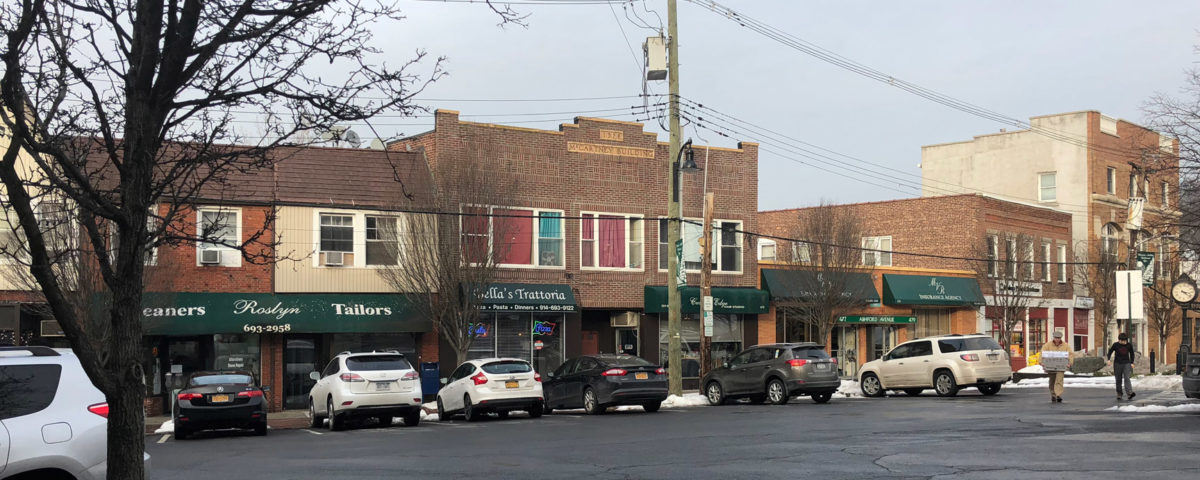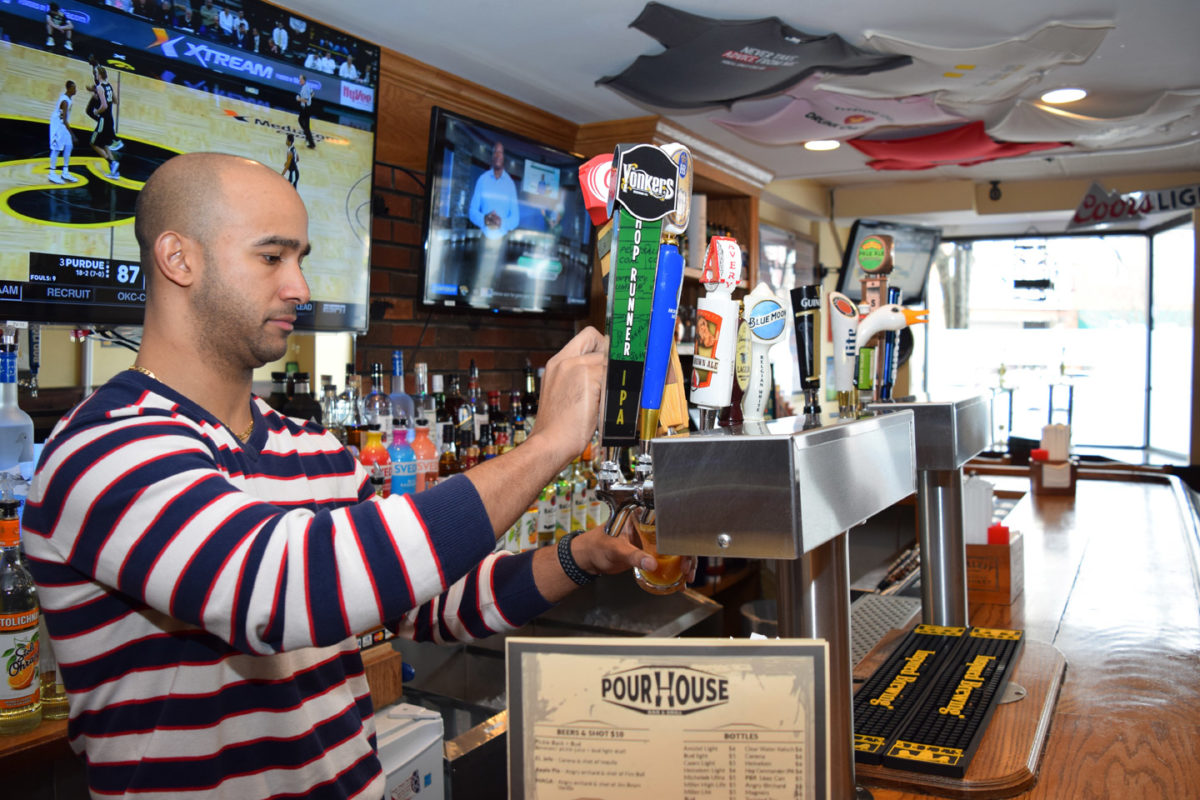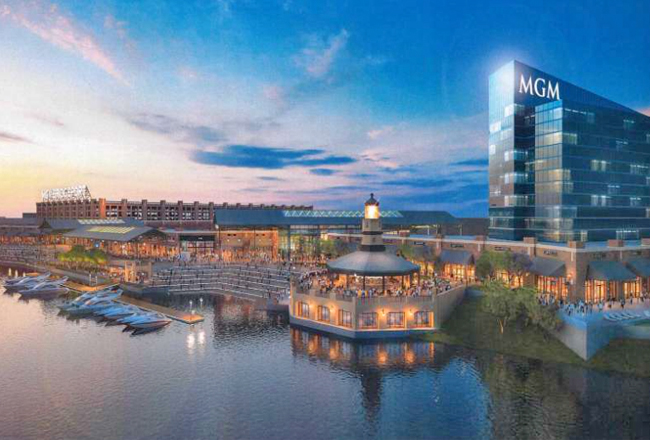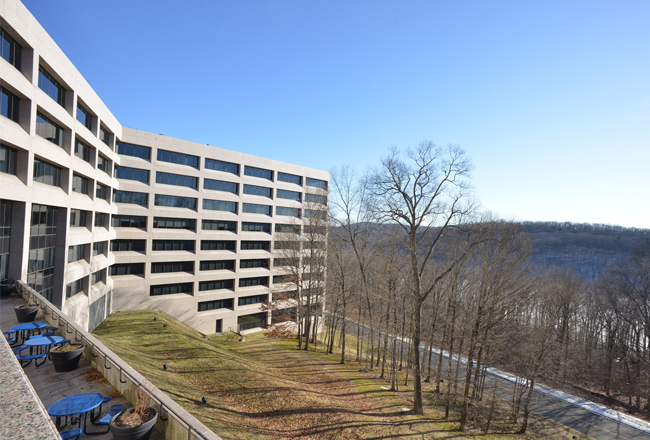
After two years of construction, the third and final phase of the Ashford Avenue Bridge project that connects the villages of Ardsley and Dobbs Ferry began in January.
“It seems like they”™re so close this time you can almost touch it,” said Jimmy Dixon, manager of Modern Paint and Hardware, which sits just off the Ardsley end of the bridge at 686 Saw Mill River Road.
[vsw id=”I47R5EOlCIM” source=”youtube” width=”650″ height=”440″ autoplay=”no”]During the final phase of the nearly $18 million project, the bridge will be restored to two lanes in each direction during peak periods. The road”™s final paving and sidewalk work will occur during midday periods, while the restoration of the exit and entrance ramps of the northbound Saw Mill River Parkway will occur during peak periods.
The entire project is now scheduled for completion later this summer.
“We”™re starting to see the light at the end of the tunnel,” said Robert Conway, a bartender at PourHouse Bar & Grill at 468 Ashford Ave. in Ardsley.
Though the bridge project is ahead of schedule ”” the third phase was originally expected to commence this spring ”” its completion can”™t come soon enough for many who live and work near Ashford Avenue.
“I definitely noticed in the village that it had an effect on businesses,” Dixon said of the project. “During peak hours, the line (of traffic) goes all the way back to the middle of Dobbs Ferry.”
During the years-long construction, Dixon said the project seemed to cause a divide between the hardware store”™s two customer bases.
“It”™s definitely been frustrating for the customers that we”™ve had for a million years that were on the other side of the bridge. They didn”™t want to come here anymore. It kind of left them stranded,” he said. “I think with the bridge being open, we”™re going to get a lot of our customers back from Dobbs Ferry and we”™re going see a lot more of an upward turn in business.”

The construction also caused a dip in business at PourHouse, where owner Alex Valdez said he estimates his restaurant trade “could have seen a 10 to 20 percent increase if all the bridge construction was not going on.”
“A lot of people would talk about it when they came in, how there”™s so much traffic,” said Valdez. “People would come in and be in kind of a pissy mood, but we always try to be as accommodating as possible.”
Gerardo Ponce, owner of the restaurant Fiesta Mexico at 468 Ashford Ave., agreed. “Happy customers are better for business,” he said.
Ponce added that the congestion surrounding the bridge only added to problems his customers had when visiting his restaurant.
“Parking is a big problem here,” he said, gesturing to the metered spaces in front of his building, on a commercial cul-de- sac below the bridge. “The space for parking is terrible.”
Many regular customers would choose to dine elsewhere rather than deal with the traffic headache of the bridge, Valdez said. “People knew about the construction, so they avoided the area altogether,” he said.
The construction and congestion caused problems not just for customers, Valdez said, but also for the deliveries his business relies on. “It took a long time to for them to get here.”
Those problems were compounded further by what Dixon said has been a rise in traffic congestion along state Route 9A that passes through Ardsley.
“It kind of felt like it never was going to end at points,” he said. “It definitely has been frustrating, but the nice thing is we”™re going to have a bridge that they”™re not going to have to touch for a while, hopefully, and we”™ll have a good way back and forth to Dobbs Ferry and we”™ll connect the Rivertowns again.”
Constructed in 1950, the county bridge, which traverses the Saw Mill River, Saw Mill River Parkway, South County Trailway and the state Thruway, was estimated to carry roughly 20,170 vehicles per day prior to its rehabilitation. The renovation of the more than half-century-old structure stemmed from an incident in 2012 when concrete from the bridge fell onto the Thruway below. Inspections were ordered and plans to rehabilitate the crumbling structure were set in motion.
The project was awarded in late 2015 to EE Cruz & Co. Inc., a heavy civil construction contractor headquartered in Manhattan, and preliminary work began soon after in January 2016.
The first phase of construction began in June 2016, when the southern half of the bridge was demolished and replaced. Stage two, which began last May, saw the replacement of the northern half of the bridge.
During both stages, one lane of traffic was open in each direction on Ashford Avenue.
“We”™re a business that”™s open 7 to 5 every day, so if you have a block for rush hour in the morning and then again in the afternoon where it”™s really inaccessible to get here, it”™s really frustrating for the customers, businesses, for everybody,” said the hardware store manager.
Additionally, the entrance and exit ramps to the northbound Saw Mill River Parkway were closed during construction. Valdez said this caused an issue for many of his customers who relied on their GPS to visit his restaurant.
“Sometimes GPS would say it was open, but it was really closed,” he said. “If you miss that exit, it”™s a big pain to get here.”
The third phase of the project is expected to wrap up this spring, and officials said single lane closures during off-peak hours are possible until the completion of the project by summer.
Despite the negative effect of the construction, business owners are pleased they will finally have a new, much safer bridge.
“Thank God they fixed it,” said Leon Nokaj, owner of Bella”™s Trattoria at 473 Ashford Ave. “I don”™t mind us losing a little bit of business. It”™s better than losing people.”
Nokaj added that in recent weeks, his delivery drivers and employees who transport food to nearby homes have noticed better traffic conditions and are “getting there a little faster.”
“There”™s a little bit of an improvement,” he said. “The last year and a half, two years were very hard, but it”™s getting better.”
While businesses like Nokaj”™s were able to weather the difficult circumstances, other were not so fortunate.
The previous two-year period saw the closing of businesses that included Cedar Street Grill at 23 Cedar St, in Dobbs Ferry and Russo”™s Delicatessen at 472 Ashford Ave., which sat two shops down from PourHouse.
“It really hit them hard,” Valdez said of Russo”™s.
For other businesses in the area, though, the effect of the construction was not as noticeable.
“We”™re just a different kind of business,” said Doreen Bartolini, owner of Ardsley Salon at 487 Ashford Ave. With the bridge delays, “We just have clients who are late, or who huff and puff, but we”™re accommodating.”
“By the time they get a head massage, they forget about it.”
A recent move for the salon is a testament to how little the construction affected its business. When her lease at 466 Ashford Ave. was up this winter, Bartolini decided it was time for a change of scenery. But instead of a move to another town or even another part of Ardsley, she chose to move directly across the street to 475 Ashford Ave.
“We just like the area,” she said.
Many hope the completion of the construction project will signal a revival of the village.
“I think just having the bridge done and sort of relieving some of that traffic stress will have a big impact on bringing some customers back here,” Dixon said. “Hopefully, they couple that with a townwide effort to sort of support some of these businesses better in the town.”





















